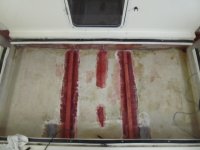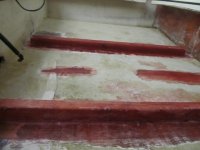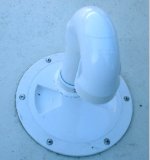Alyssa Jean
New member
They look to be plastic and the four of them are what the tank rested on. Probably about 1/2" of space between the tank and the floor.
The new tank will rest on fiberglass stringers that will be glassed onto the bottom of the boat. The tank will be about 1 1/2" up from the floor. Also the new tank will be coated with epoxy. Looks like the tank capacity will be just under 100 gallons from the measurements that have been taken.
BTW the old tank's bottom, which only could be seen after cutting the tank out, looked like swiss cheese from salt water corrosion. So just patching the two bad spots would have been a total waste of time.
The new tank will rest on fiberglass stringers that will be glassed onto the bottom of the boat. The tank will be about 1 1/2" up from the floor. Also the new tank will be coated with epoxy. Looks like the tank capacity will be just under 100 gallons from the measurements that have been taken.
BTW the old tank's bottom, which only could be seen after cutting the tank out, looked like swiss cheese from salt water corrosion. So just patching the two bad spots would have been a total waste of time.




